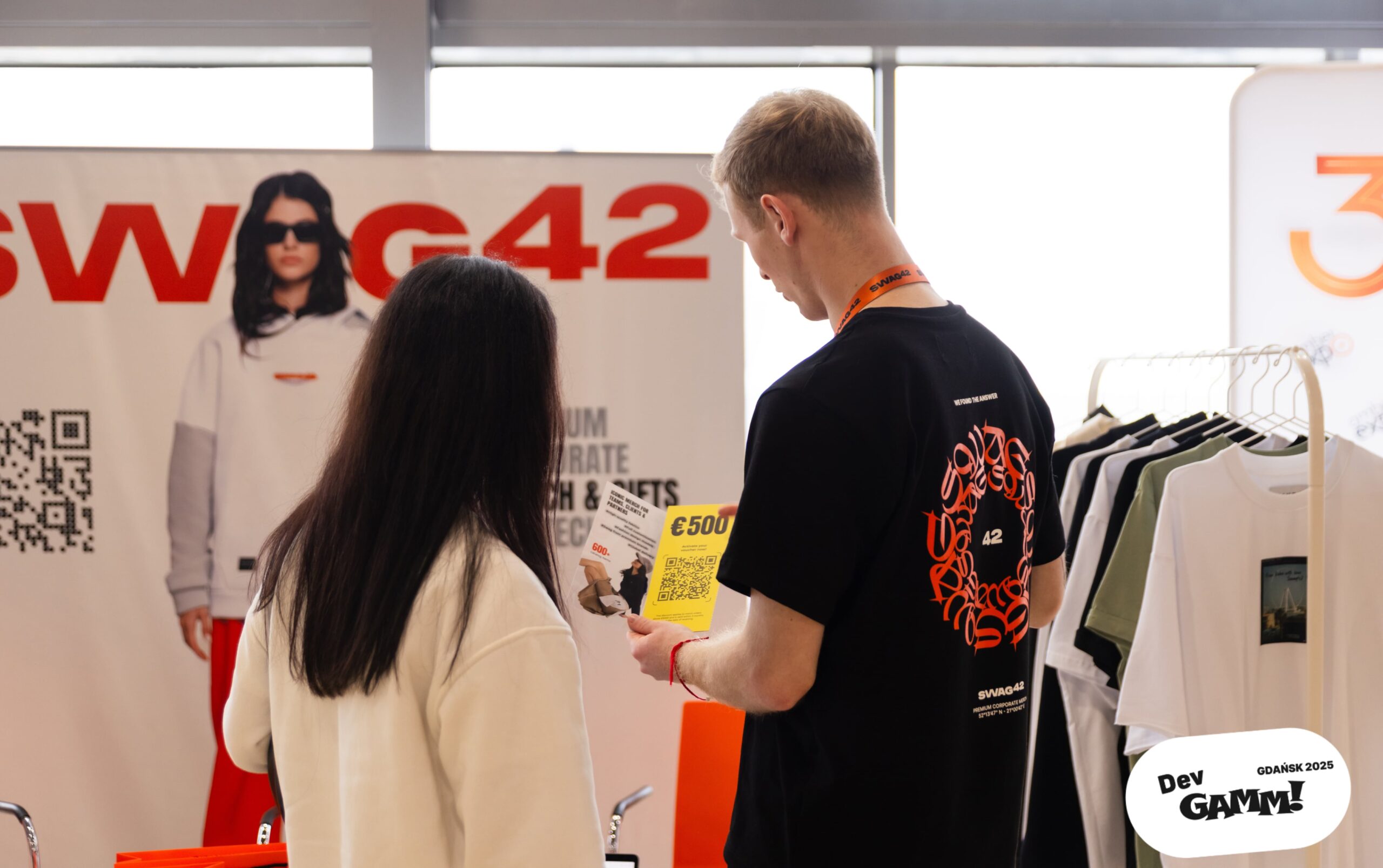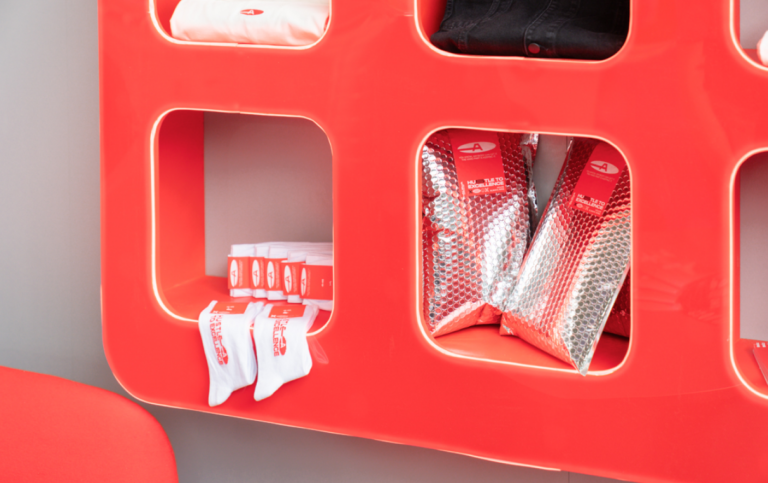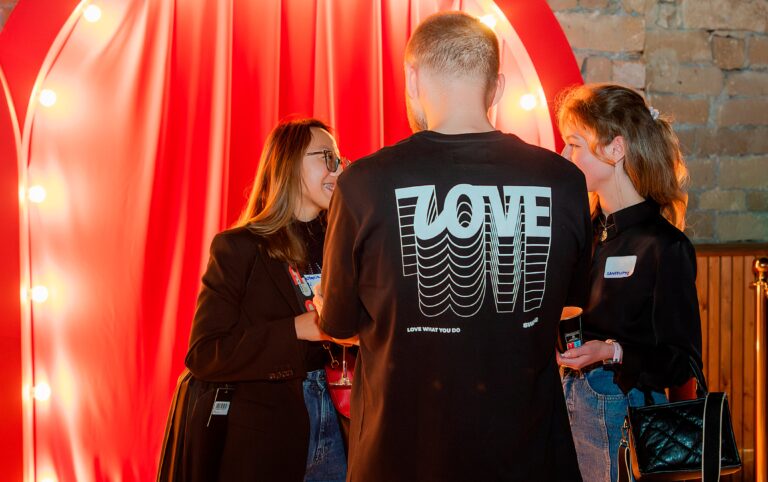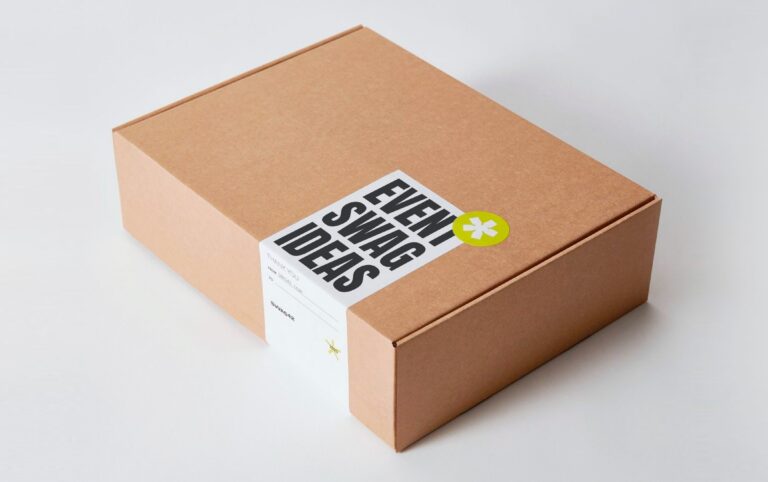Exhibiting at a trade show for the first time? This detailed event planning guide is for you. From setting event goals to post-show analysis, we’ll walk you through event preparation to ensure a smooth and successful debut. As a bonus, find an event checklist template at the end.
A trade show is the most efficient place to meet potential clients and showcase your brand. But without the proper planning and execution, it’s easy to spend a fortune and fail. Use this event checklist to stay on track and demonstrate clear ROI from exhibiting to stakeholders.
Event planning process
While preparing for exhibition, you’ll have to go through the following steps (you will find them in the event checklist below):
- Event strategy
- Logistics planning
- Swag & promo materials
- On-site preparation
- Post-show evaluation
Event strategy: the main step of the event checklist
An event strategy connects your business goals to event goals, to makle sure the event brings benefits for your company. Your event strategy should define:
- Budget and ROI targets that decision-makers should approve.
- Sales objectives: how many and what kind of leads you expect to get (for example, 20 qualified leads spending $20K+ annually on solutions like yours).
- Target attendees and exhibitor profiles, and your value proposition for each.
- Success metrics and tracking methods: the number of leads collected, sales made on-site, foot traffic counts, social media mentions during the event, etc.
- Lead capture flow: how you will collect contacts, categorize, and submit them to CRM. There are many ways to collect contact information, from QR or NFC submission forms to business card scanning mobile apps. The lead capture flow should be planned together with the activations and interactions.
- Activation planning: How will you attract attendees and get remembered? Consider a lottery, unique giveaways, challenges, quests, a client dinner or side event, or a live art show. Think about how to stand out among hundreds of exhibitors and boost networking.
- Risk assessment and mitigation plans. Though it usually comes with experience, it’s important to forecast the pitfalls at every exhibition stage. Plan the mitigation actions and reserve budget for unexpected bottlenecks.
Pro-tip: To generate as many leads as possible, analyze and categorize exhibitors. What services or solutions do they offer? What are their business processes? What can you offer to solve their problems?
This analysis will help both you and your sales team. You can rely on this data to plan marketing materials, activations, and lead captures. At the same time, the sales team will be armed to prepare strong and specific offerings and plan to visit exhibitors’ stands during the event.
Lead capture flow
Lead capture defines the success of your trade show participation, so we added it to the event planning checklist. Think of lead capture as a flow that starts before and continues after the trade show, as you are free to collect leads well before and after the conference.
Before the event, set up the pre-show marketing campaign to warm up the prospects: emails, social media teasers, and promo gift campaigns to generate leads. Thus, you make several touches that are necessary for B2B lead generation.
According to the recent Belkins Sales follow-up statistics in B2B, the best reply rates come from 2-3 touches.
During the event, equip your team with mobile scanners or an event app where they can quickly take notes about each interaction. Context details matter here a lot—knowing that someone is interested in a specific feature or product helps personalize follow-up later.
Once the show wraps up, don’t wait. Enter all leads into your CRM within 24 hours, tagging them based on interest and urgency. Thus, you ensure your sales team knows exactly who to contact first and what to say.
Event activations planning
How do you stand out from hundreds of competitors? That is the main challenge for exhibitors. To engage crowds of people, set up unique activations, and plan memorable, desirable giveaways.
From Swag42’s experience, the best-performing activations are interactive challenges with extraordinary gifts and exclusive live shows (read about the live merch painting show by Swag42 CryptoProcessing by Coinspaid).
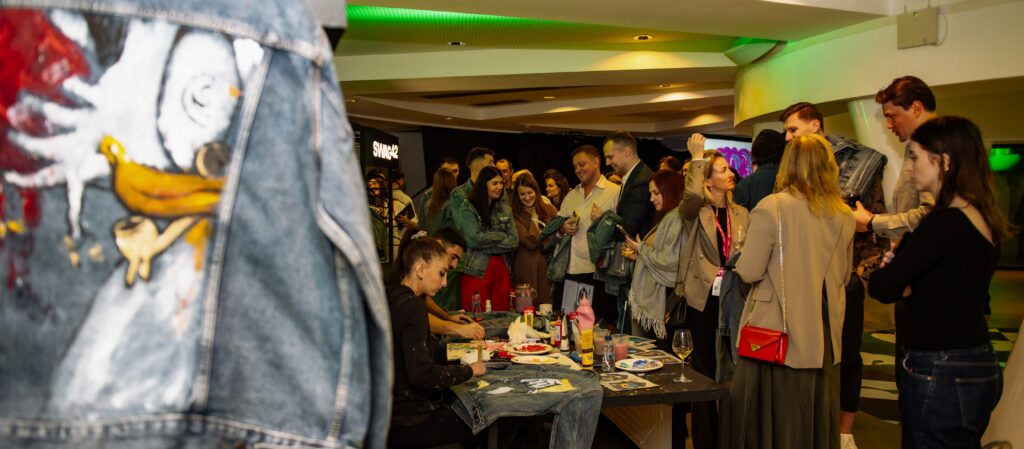
Still, event giveaways are one of the strongest lead magnets at trade shows. From merchandise with AR filters and NFC tags to interactive digital swag shops, you have plenty of options to stand out. However, many things can go wrong, making merch a total waste of money. Read our seven secrets of event merchandise that people hunt for at trade shows.
Logistics planning
As soon as you approve the budget for the event, book a stand at least 6 months before. At large conferences, stands sell like hotcakes. Early booking allows you to choose high-traffic locations, such as food zones or restrooms, which can increase your brand’s exposure.
Planning logistics is a step that goes through the entire event planning process, so find logistics tasks at every stage of the event checklist.
Pro tip. Investigate sponsorship, branding, and speaking opportunities to strengthen your reach.
Сreate a roadmap and own the project
Just like a project manager, you need to create a roadmap with a timeline for every specific task and milestone. It’s a detailed schedule showing:
- What needs to happen and when
- Who’s responsible for every task
- How different tasks affect one another
Keep your event team in sync. The best option is to arrange weekly meetings to stay on track and find quick solutions to changing situations.
Pro tip. Make a task checklist (or extend our event checklist template below). Uploading and structuring all tasks on paper, you won’t get overwhelmed. Include everything from signing contracts to ordering business cards. A clear to-do list prevents last-minute chaos and missed opportunities at business events.

The Exhibitor Manual should be your best friend. Add all submission deadline reminders to your work calendar to avoid missing crucial dates.

Anna Yanchenko
Event Manager at Swag42

Pro tips: The early bird gets the worm. Reserve hotel accommodations at least 3 months in advance. Thus, you can settle down in event partner hotels close to the venue. Furthermore, arrange transfers to and from the venue 2 weeks before the event, and leave early in the morning to avoid traffic jams.
Preparing promo materials and merchandise
Your booth visuals and handouts should all serve a purpose. Pop-up banners grab attention. Rollups communicate core messages, while leaflets give attendees something to take away and review later. Everything should reflect your brand and speak your target audience’s language.
Ensure designs are easy to read, visually aligned with your brand, and tailored to the format. For example, consider where to place rollups and how much text is visible from a distance.
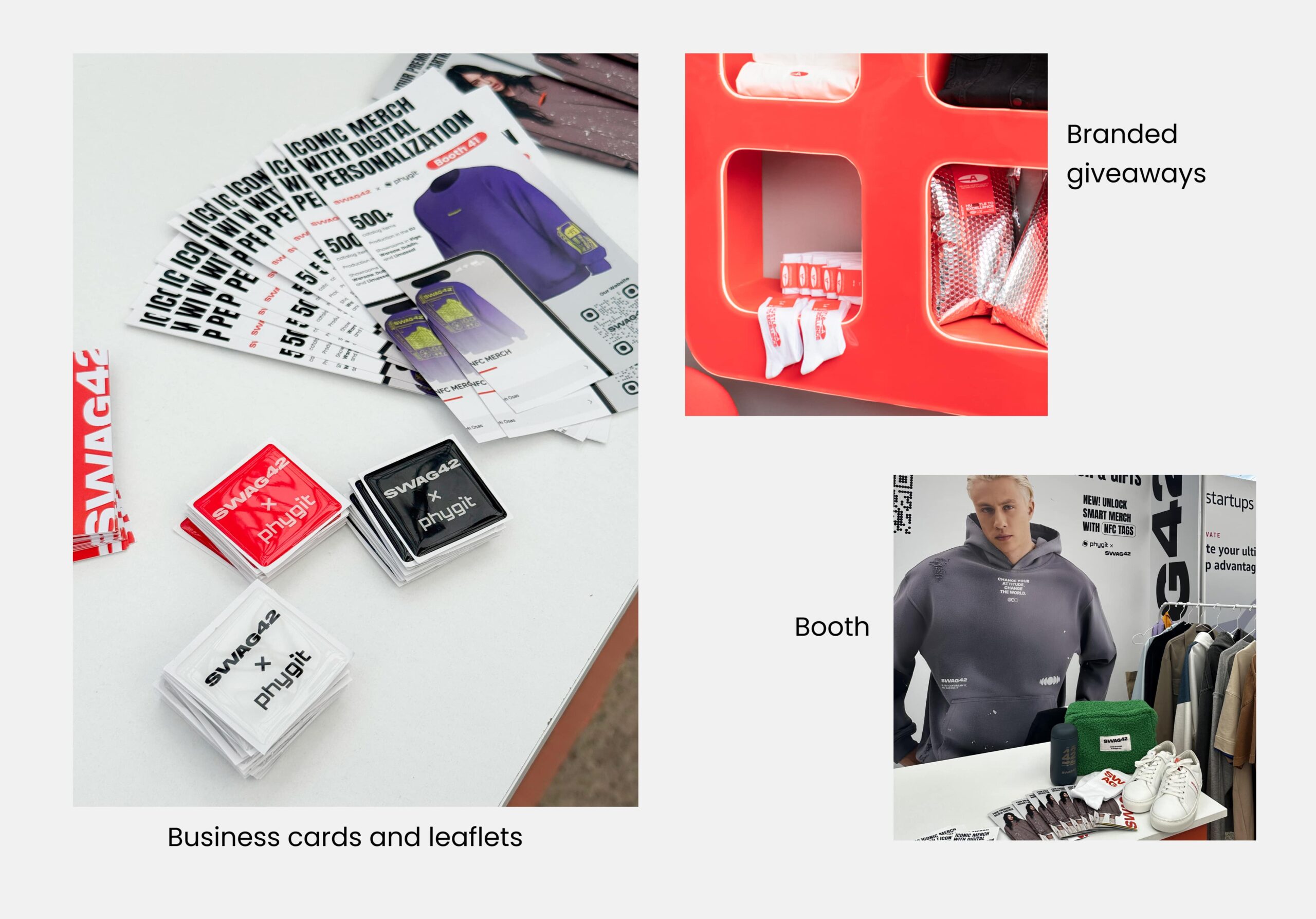
Pro tip. Coordinate early with the print house to avoid production delays. Set internal deadlines for finalizing copy and design—it’ll keep the process smooth and stress-freemarkets.
Order merchandise 1.5 months before the event
Approvals, designing, producing, and delivering merch can be complex and time-consuming, with possible delays at each step. If the event is on another continent, place your orders 1.5 months before, as delivery times are longer.
Swag42 offers full-service support from concept to delivery, including the event concierge service with direct booth drop-off, overnight storage, and merch returns to your/our storage.
On-site preparation
You’ve made it to the venue—now it’s time to pull it all together. First, pick up your team’s badges a day before the show to skip long queues and start fresh on day 1. The same day, do a quick run of your booth setup to make sure everything’s in place and working. Test all tech—screens, scanners, tablets—and bring spare chargers and cables just in case.
Also, walk around the hall and locate key spots: the WCs, food courts, info desks, and emergency exits.
To help your team feel good during the tense networking, stock the booth with snacks, water, mints, phone chargers, tissues, scissors, duct tape, and hand sanitizers. On Day 1, before the doors open, gather your team for a quick huddle—review goals, shifts, and key talking points.
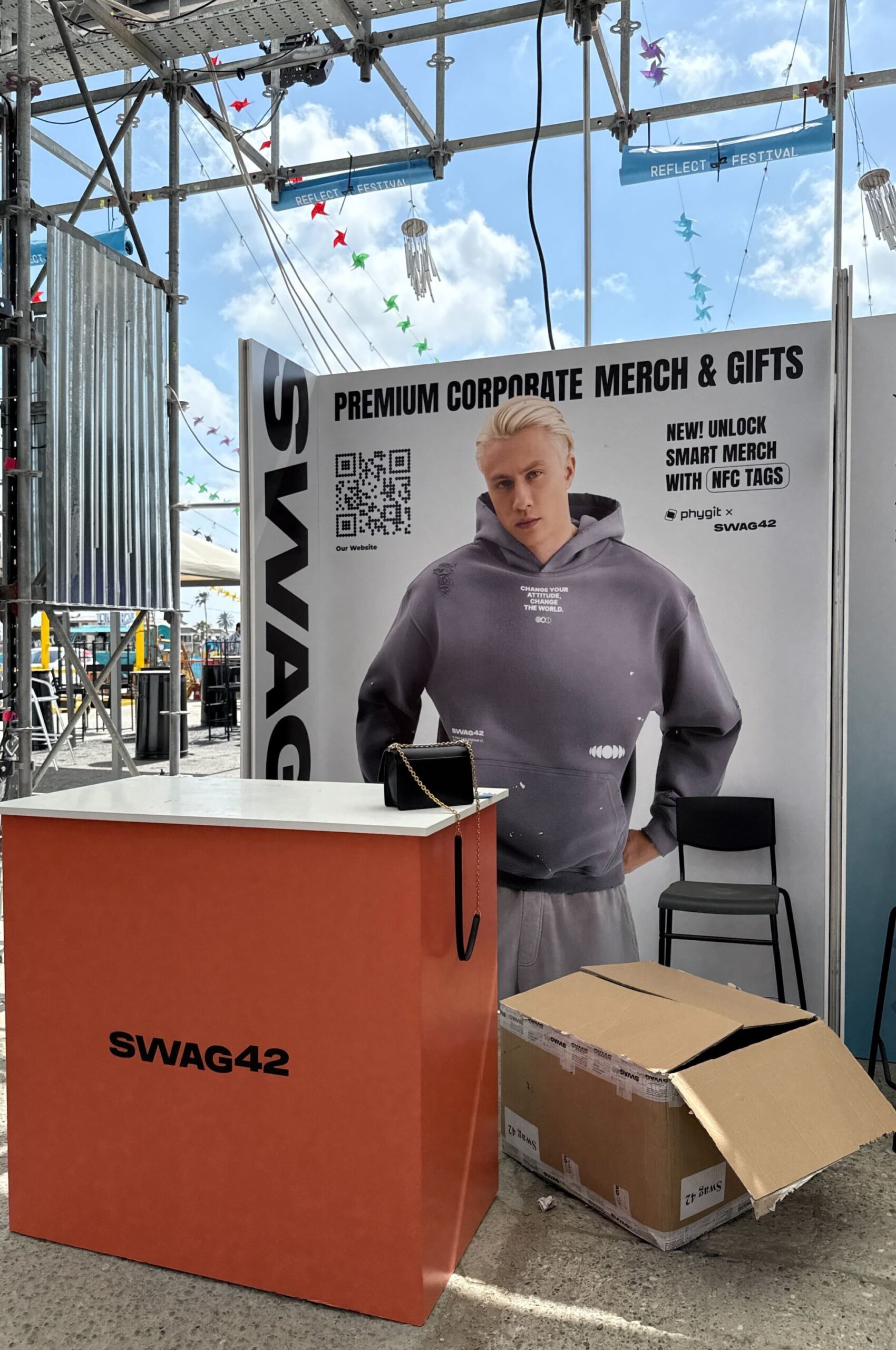
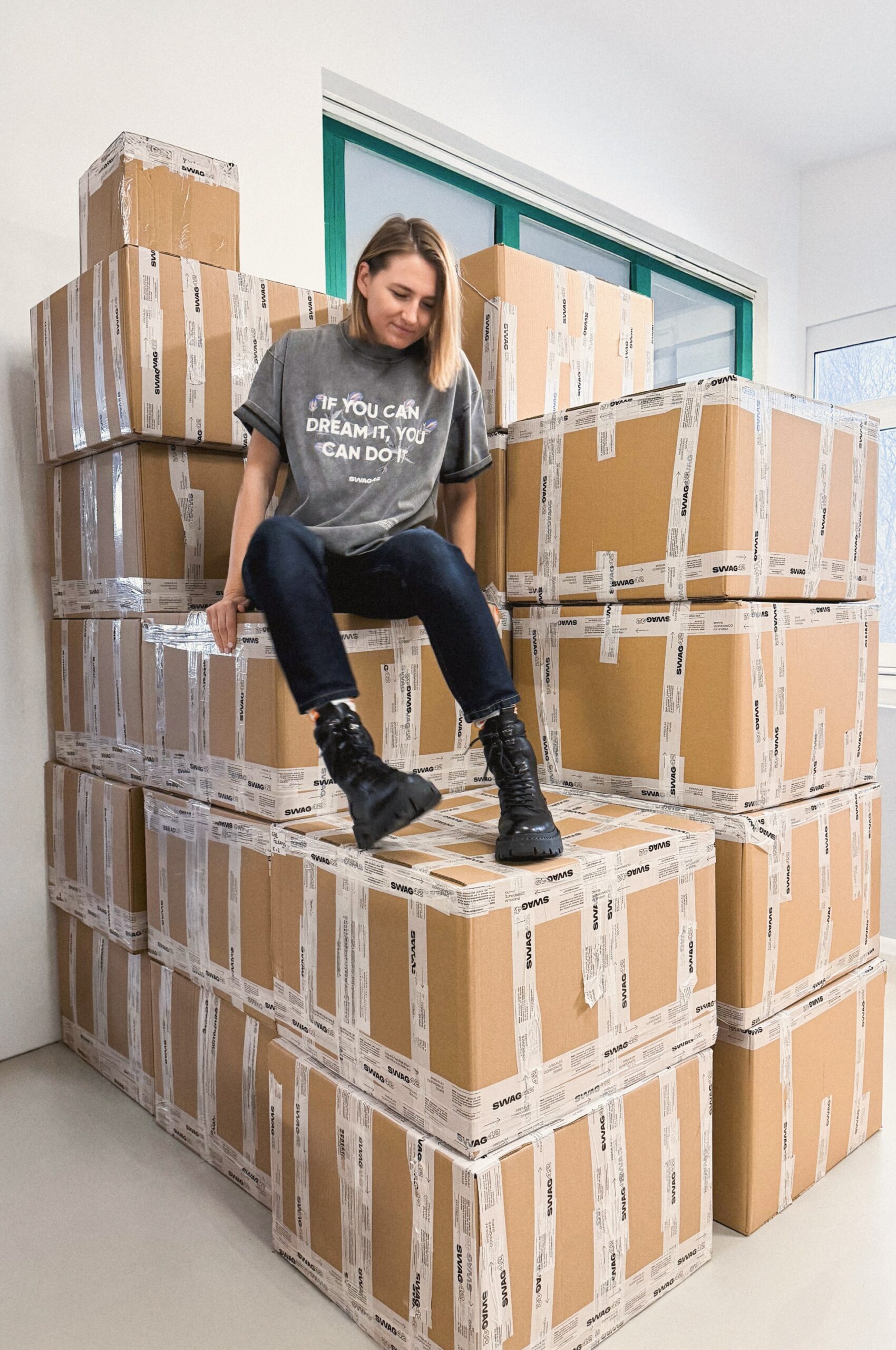
After the show: did you hit the mark?
Once the dust settles, take a breath—and then evaluate. How did you perform against your original goals? How many leads did you collect? How many sales did you close? What kind of booth traffic or media coverage did you get?
But don’t just look at numbers. Gather feedback from your team and attendees. What worked well? What felt chaotic? What would you change next time?
These learnings shape your approach for the next event and help you refine the strategy for better results.
Event planning checklist template
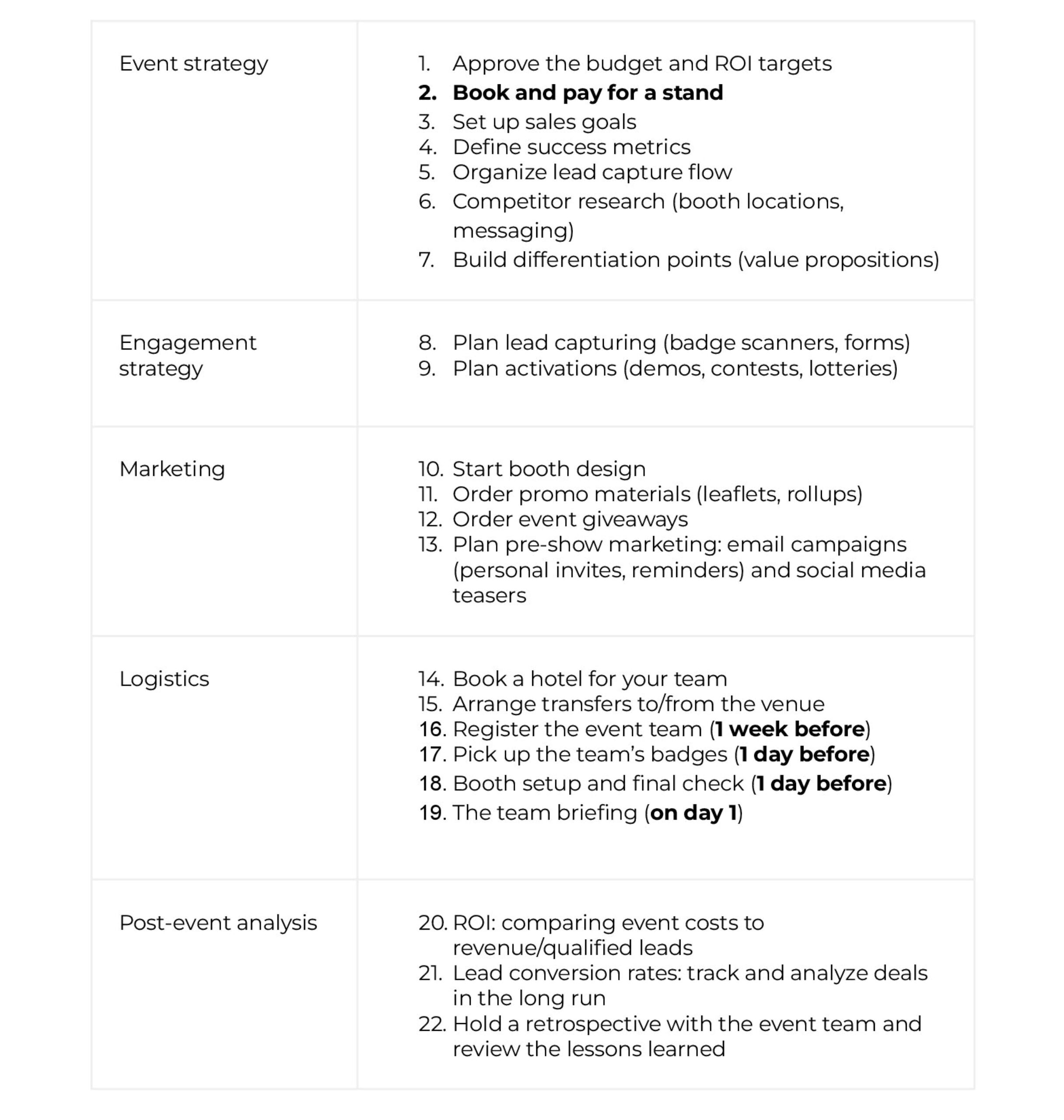
Good luck — and don’t forget to breathe
Even the best-planned events bring last-minute surprises. A lot depends on luck, timing, and the people on your team — so stay flexible, calm, and ready for a bit of chaos. You’ll do it!
Need help with event giveaways or booth activations? We’re here to make your next show unforgettable.
